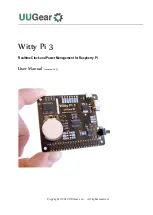
CHAPTER 21 STANDBY FUNCTION
Preliminary User’s Manual U17260EJ3V1UD
520
(b) Release by reset signal generation
When the reset signal is generated, STOP mode is released, and then, as in the case with a normal reset
operation, the program is executed after branching to the reset vector address.
Figure 21-7. STOP Mode Release by Reset
(1) When high-speed system clock is used as CPU clock
STOP
instruction
Reset signal
High-speed
system clock
(X1 oscillation)
Normal operation
(high-speed
system clock)
STOP mode
Reset
period
Normal operation
(internal high-speed
oscillation clock)
Oscillates
Oscillation
stopped
Oscillates
Status of CPU
Oscillation stabilization time
(2
11
/f
X
to 2
16
/f
X
)
Oscillation
stopped
Starting X1 oscillation is
specified by software.
Oscillation stopped
Reset
processing
(20 s (TYP.))
µ
(2) When internal high-speed oscillation clock is used as CPU clock
STOP
instruction
Reset signal
Internal high-speed
oscillation clock
Normal operation
(internal high-speed
oscillation clock)
STOP mode
Reset
period
Normal operation
(internal high-speed
oscillation clock)
Oscillates
Oscillation
stopped
Status of CPU
Oscillates
Oscillation stopped
Wait for oscillation
accuracy
stabilization
Reset
processing
(20 s (TYP.))
µ
Remark
f
X
: X1 clock oscillation frequency
Table 21-4. Operation in Response to Interrupt Request in STOP Mode
Release Source
MK
××
PR
××
IE ISP
Operation
0 0 0
×
Next address
instruction execution
0 0 1
×
Interrupt servicing
execution
0 1 0 1
0 1
×
0
Next address
instruction execution
0 1 1 1
Interrupt servicing
execution
Maskable interrupt
request
1
×
×
×
STOP mode held
Reset
−
−
×
×
Reset processing
×
: don’t care
















































